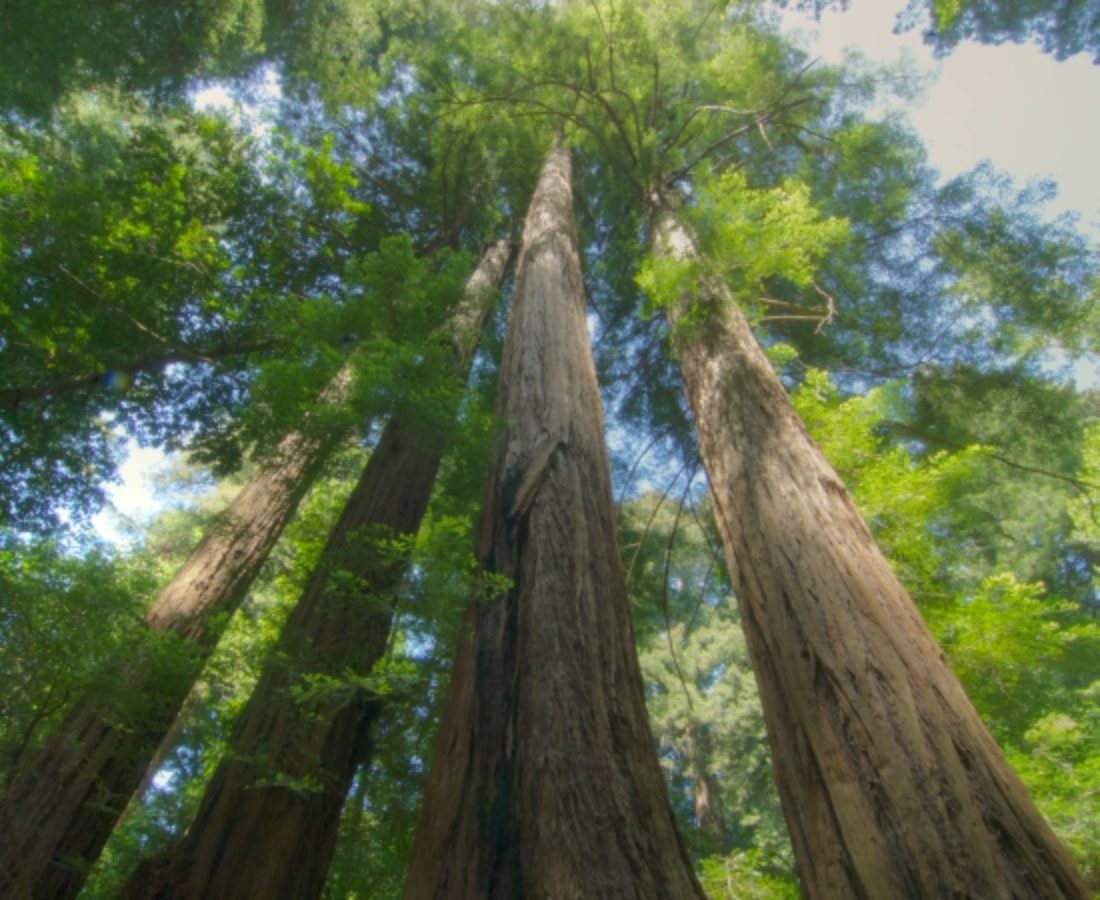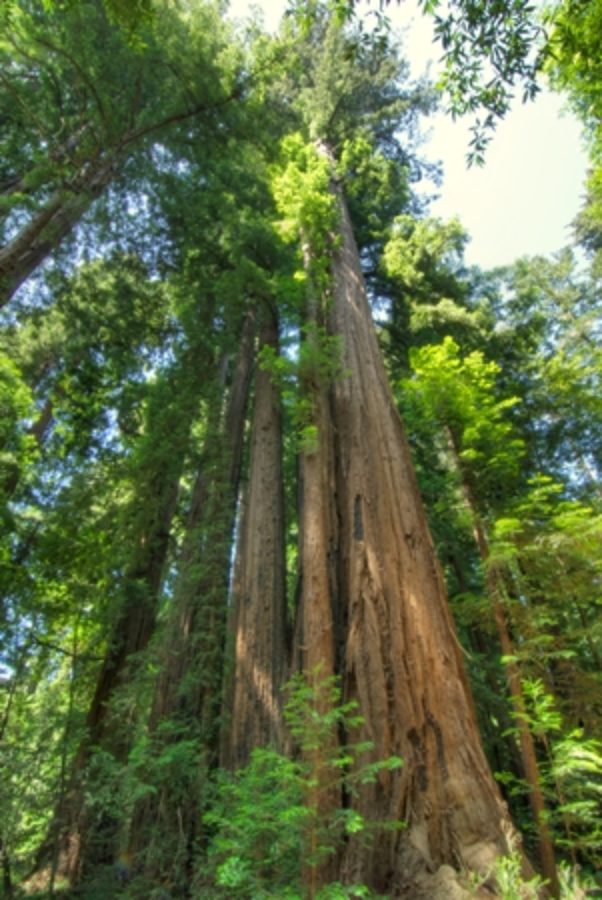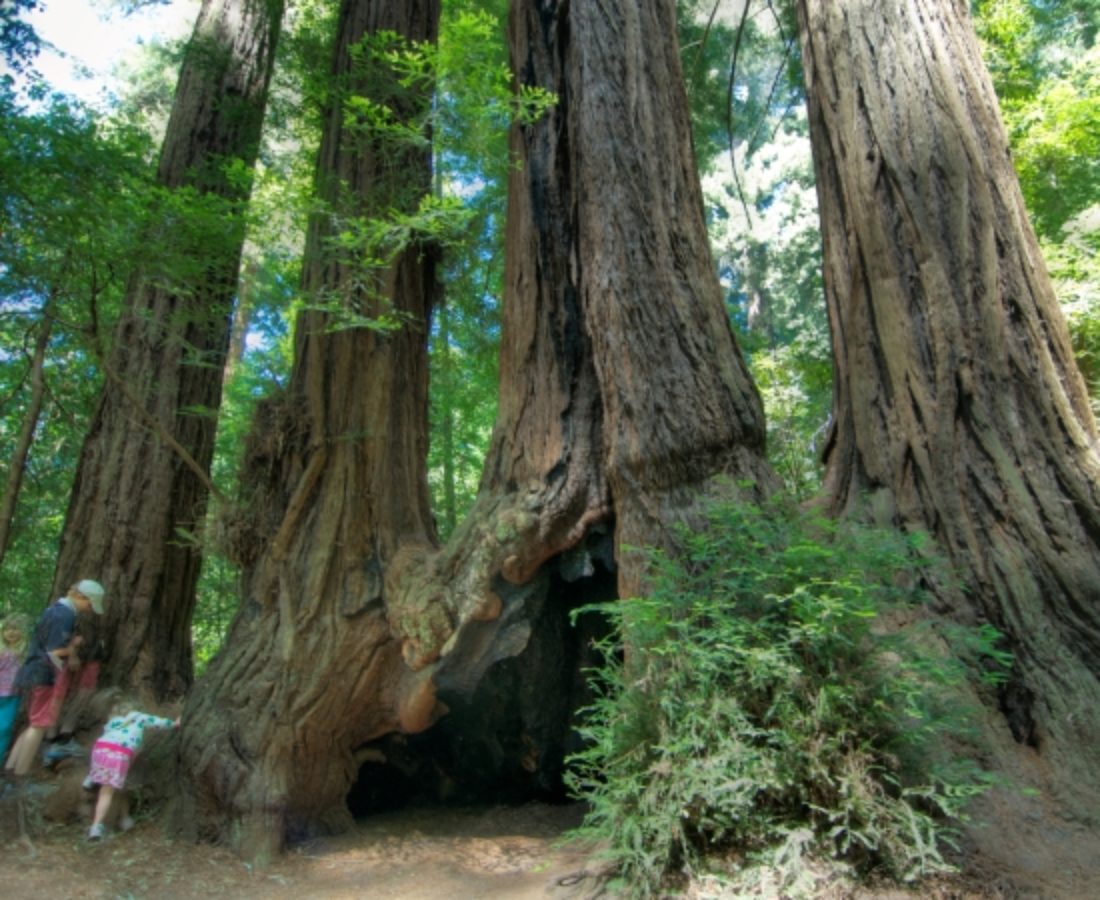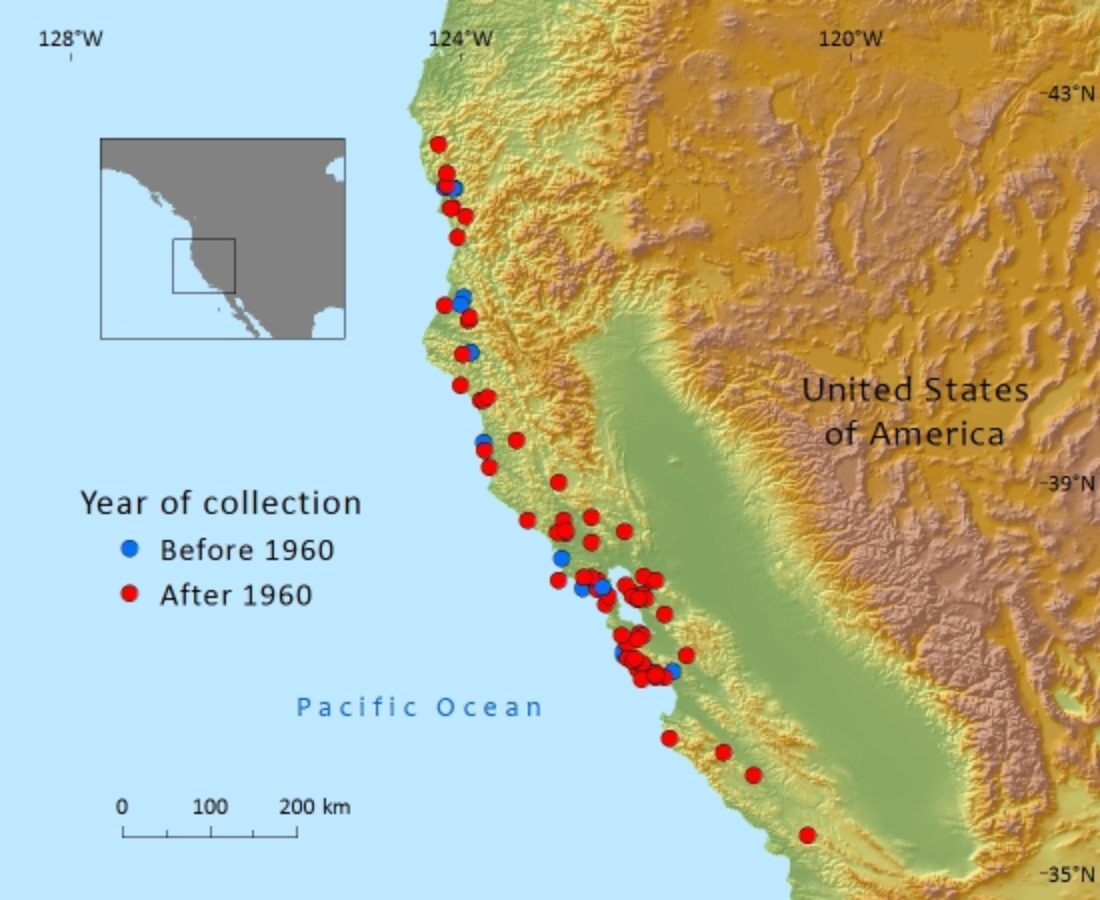Cupressaceae
Sequoia sempervirens
Endemic to the Pacific coast of the USA where historical logging has had significant effect of the population; present-day threats include selective logging and urbansiation
Human Uses
The wood of this tree has been used extensively in the past for construction work wherever decay resistance was a requirement. Many of the older houses in California and Oregon were built with it, including the shingles on the roofs. Railroad sleepers and bridge timbers were other uses to which it was put. With the sharp decline in 'old growth' stands of this tree, which yielded the best quality saw timber for many of these purposes, uses have more recently shifted to specialities like turned wood products, cabinets and polished table tops from its burls or burrs, which produce knotty wood with beautiful patterns and colours. Composite (synthetic) planks are increasingly replacing redwood for home decks as the synthetics become cost-effective and have better durability and less upkeep. The thick, fibrous, and tough bark is used for insulation or mulched for application in gardens to suppress weeds in flower beds. The Coast Redwood is extensively cultivated as an ornamental tree in many countries and about 10 cultivars are in the trade. In favourable conditions growth is rapid and trees can reach impressive sizes within a century and, if their longivity in their natural range is even remotely approached, they could continue to grow for many more centuries.
References and further reading
- Ahuja, M.R. (2009). Genetic constitution and diversity in four narrow endemic redwoods from the family Cupressaceae. Euphytica 165:5-19
- Barbour, M.G., S. Lydon, M. Borchert, M. Popper, V. Whitworth & J. Evarts. (2001). Coast Redwood: A Natural and Cultural History. Los Olivos, CA: Cachuma Press.
- Burns, R.M. & Honkala, B.H. (1990). Silvics of North America. USDA, Forest Service, Washington, DC.
- Farjon, A. & Schmid, R. (2013). Sequoia sempervirens. In: IUCN 2013. IUCN Red List of Threatened Species. Version 2013.1. <www.iucnredlist.org>. Downloaded on 07 July 2013.
- Fritz, E. (1940). Problems in dating rings of California coast redwood. Tree-Ring Bulletin 6(3):19-21. (www.treeringsociety.org/TRBTRR/TRBvol6_3.pdf, accessed 2006.06.05.)
- Lanner, R.M. (1999). Conifers of California. Cachuma Press, Los Olivos, California.
- Noss, R.F. (ed.). (2000). The Redwood Forest. History, Ecology and Conservation of the Coast Redwoods. Island Press, , Washington, D.C. & Covelo, California.







